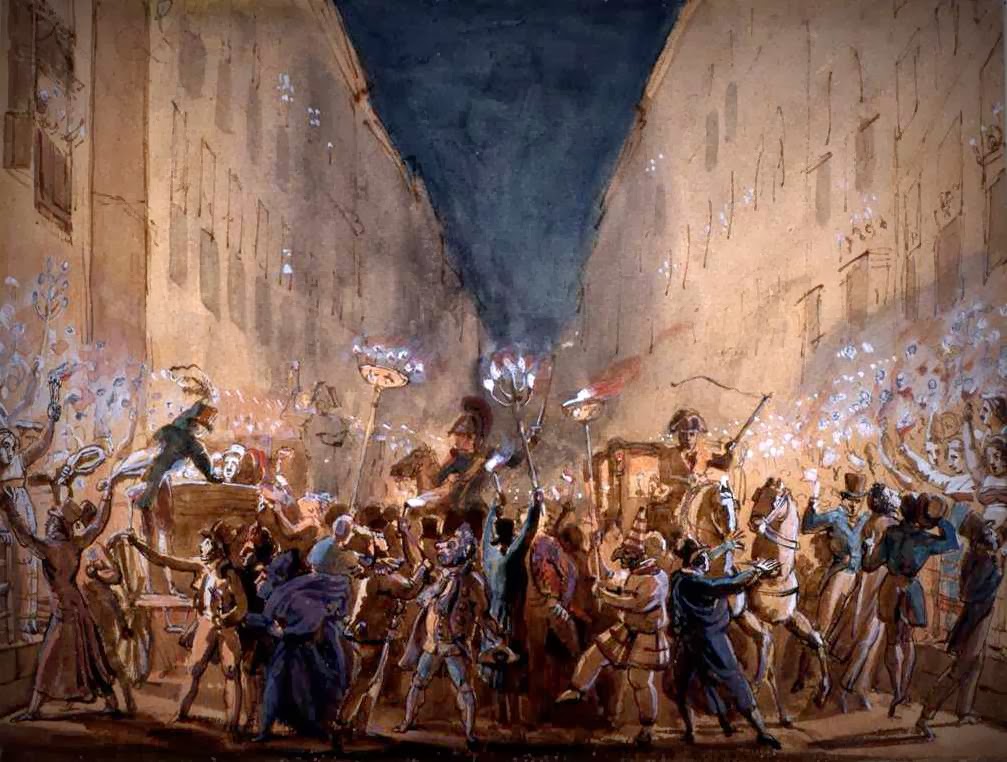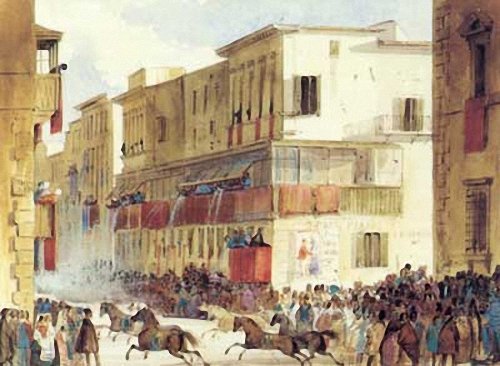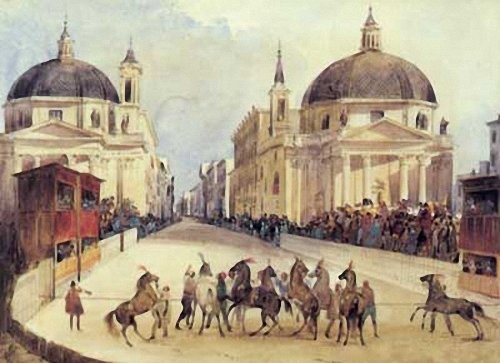The ancient Roman Carnival, below our building in via del Corso
From XV to XIX Century Rome was the world leading city of the Carnival season. The Roman people enjoyed the Carnival period rich in parties and entertainments, such as horse rides, disguised parties and parades, games and tournaments.
Goethe wrote: “Roman Carnival is not an holiday given to people, yet an holiday that people gives to himself”, in 1788. It was totally organized by the people, since the Pope’s Government was not involved in planning nor in financing the events.

One of the main events was the Ride of the Berber horses: free horses run starting from People’s Square to Venice’s Square. The horses run was downtown located, in the middle of historical building such as Palazzo Fiano, the building bought by the Dukes of Fiano during the XIX Century.

This is the building where the Hausmann & Co. historical shop is located since 1891. At the age of the Carnival, the watch store was located very close by, in a shop in Palazzo Piombino, where the current Galleria Alberto Sordi was built.
The ride was abolished on 1874 by the king Vittorio Emanuele II, after a serious accident. This was the beginning of the decline of the Roman Carnival…































